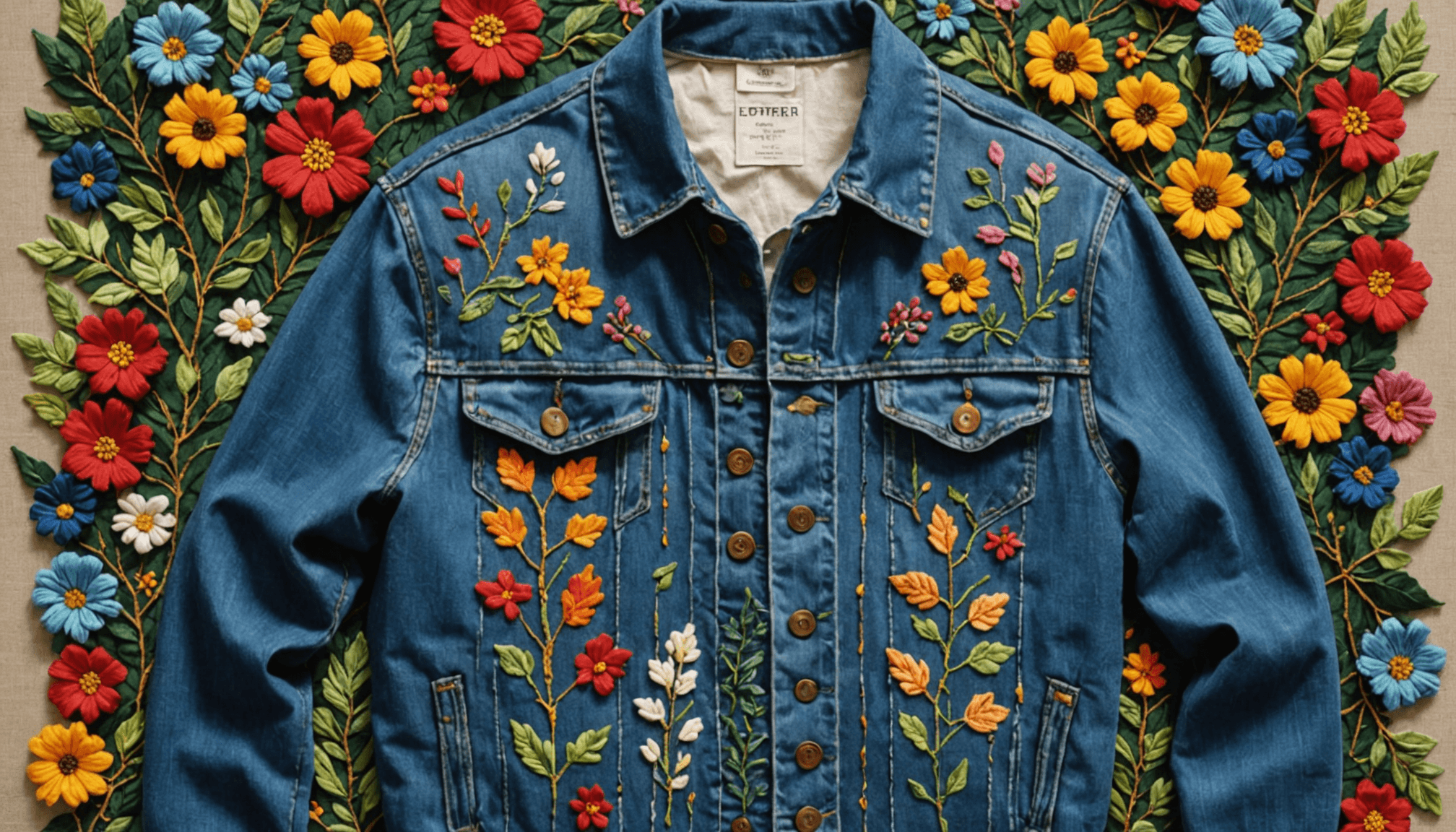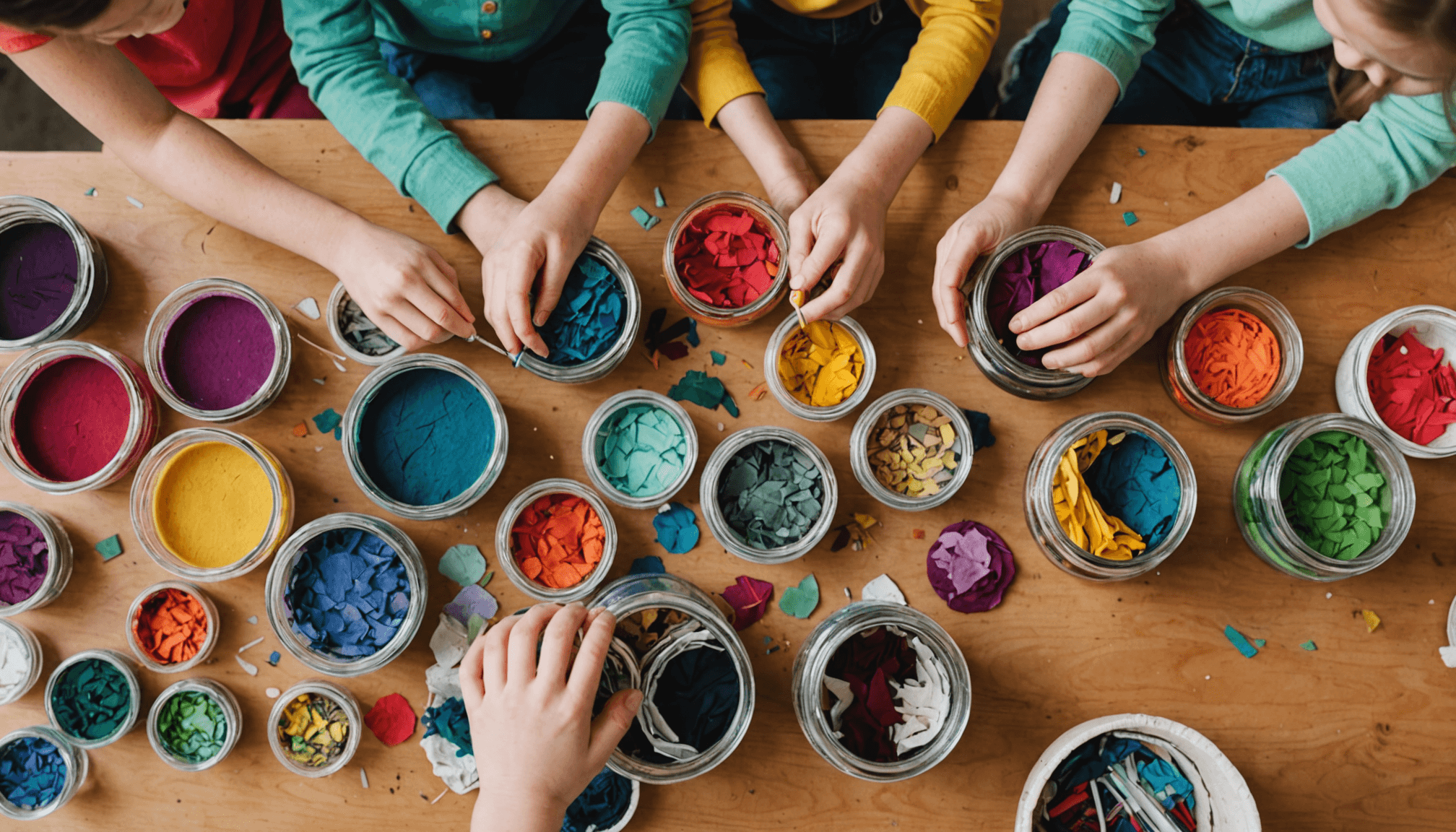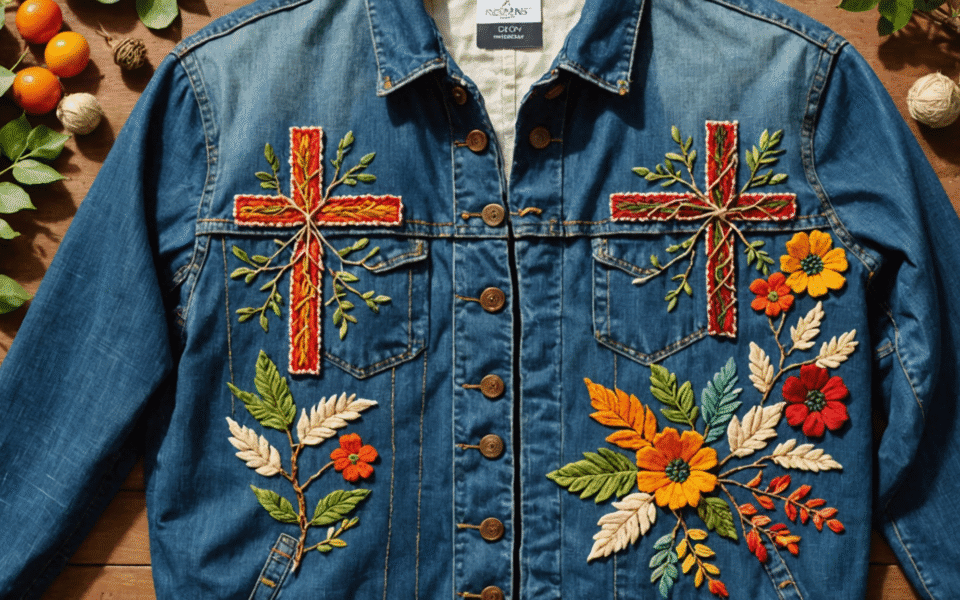Eco-Friendly Arts and Crafts Ideas

- Sustainable Materials for Crafting
- Creative Upcycling Projects
- Nature-Inspired Art Techniques
- Eco-Friendly Paint and Dye Options
- Tips for Reducing Waste in Crafts
Choosing sustainable materials for crafting is essential for reducing your environmental footprint while indulging in the creativity of arts and crafts. As passionate cross stitch enthusiasts, we often seek out fabrics, threads, and embellishments that not only add beauty to our work but also resonate with eco-conscious practices. By incorporating sustainable materials into your projects, you can embark on a journey that honors both your craft and the planet.
Recycled or upcycled fabrics offer a fantastic starting point. Consider using old cotton bedsheets, discarded clothing, or even remnants from previous projects. These materials not only reduce waste but also bring unique patterns and textures to your work. For instance, an old denim jacket can be transformed into beautifully textured cross stitch backgrounds, offering a striking contrast to softer threads while telling a story of transformation. When sourcing materials, look for independent retailers that specialize in sustainably produced textiles; many are now offering organic cotton and bamboo fabrics that are not only soft but have minimal environmental impact.
Natural fibers like linen, hemp, and organic cotton are also great eco-friendly options that bring a touch of elegance to your embroidery and stitching endeavors. They are biodegradable and often produced with reduced water and pesticide use compared to conventional materials. With a variety of colors and textures available, these fibers can easily elevate your projects. Additionally, opting for plant-based dyes ensures that your creations are as kind to the earth as they are pleasing to the eye.
When you dive into your next eco DIY project, consider incorporating elements from nature itself. Twigs, leaves, and flowers can be hexagonally stitched into your designs or used as tools to create unique stamps and motifs. Not only do these organic materials enhance your craft, but they also evoke a sense of grounding and connection to the environment. Whether you’re stitching onto a canvas made from recycled paper or embroidering nature-inspired motifs onto sustainably sourced fabric, the key is to think outside the box and prioritize sustainability at every step.
Engaging in sustainable crafts allows you to create beautiful, unique pieces that carry a message. Your choices matter, and your creativity can inspire others to join in the movement toward greener projects. Don’t hesitate to share your sustainable crafting journey on social media or in local craft groups—whether it’s through tutorials, photos, or stories, every little bit of inspiration fuels a larger change in the crafting community. So gather those sustainable materials, let your creative spirit soar, and pave the way for an eco-conscious crafting world!
Creative Upcycling Projects
 Exploring creative upcycling projects opens up a world of possibilities for sustainable crafts, allowing you to breathe new life into items that might otherwise be discarded. Upcycling not only minimizes waste but also challenges you to think creatively about how everyday objects can be transformed into something beautiful and functional. Whether it’s using glass jars, wooden pallets, or old toys, the potential for unique art projects is virtually limitless.
Exploring creative upcycling projects opens up a world of possibilities for sustainable crafts, allowing you to breathe new life into items that might otherwise be discarded. Upcycling not only minimizes waste but also challenges you to think creatively about how everyday objects can be transformed into something beautiful and functional. Whether it’s using glass jars, wooden pallets, or old toys, the potential for unique art projects is virtually limitless.
One popular upcycling project involves turning glass jars into decorative storage solutions or luminaries. By painting the exterior or wrapping them in twine, you can create charming candle holders or planters that elevate any space. Another inspiring idea is to repurpose old wooden pallets into furniture, such as coffee tables or garden benches. With some sandpaper and a coat of eco-friendly paint, these can become chic pieces for your home or outdoor area.
Fabric scraps can also play a starring role in your upcycling efforts. Consider stitching together bits of old clothing to make patchwork bags or quilts. Not only will you reduce waste, but you’ll also showcase your unique style and creativity. Even broken jewelry can be revived—transform old beads and broken chains into new, eye-catching pieces like charm bracelets or pendants.
For those interested in nature, using nature-inspired elements for upcycling can yield stunning results. Collect pinecones, branches, or pebbles to integrate into your crafts, whether that’s creating hanging mobile art or textured picture frames that capture the beauty of the outdoors. Each project tells a story of sustainability and the importance of rethinking waste.
Remember to share your creations with others—your journey in eco DIY can motivate friends and followers to embark on their own green projects.
- Explore your home for items that can be upcycled before buying new materials.
- Incorporate natural elements like stones or twigs into your designs for added texture and interest.
- Document your upcycling process and share it online to inspire others in the crafting community.
- Be mindful of the environmental impact of any new materials purchased for your upcycling projects.
- Collaborate with local crafters to exchange materials and ideas for creative upcycling endeavors.
Nature-Inspired Art Techniques
 Using nature as inspiration for art techniques presents a multitude of opportunities, yet there are common pitfalls to avoid that can detract from the eco-friendly goals of your crafting. One frequent mistake is overlooking the importance of sourcing materials responsibly. It’s easy to grab items without considering their origins, but selecting materials that are sustainably harvested or naturally derived is essential. When gathering elements from nature, ensure you’re doing so ethically; avoid overharvesting and be mindful of local regulations regarding foraging.
Using nature as inspiration for art techniques presents a multitude of opportunities, yet there are common pitfalls to avoid that can detract from the eco-friendly goals of your crafting. One frequent mistake is overlooking the importance of sourcing materials responsibly. It’s easy to grab items without considering their origins, but selecting materials that are sustainably harvested or naturally derived is essential. When gathering elements from nature, ensure you’re doing so ethically; avoid overharvesting and be mindful of local regulations regarding foraging.
Another common issue is the improper disposal of natural materials after use. Many crafters inadvertently send scraps and remnants to the landfill. To avoid this, consider how you can incorporate every part of the material into your project or find ways to repurpose leftover pieces in future works. For instance, if working with leaves, think beyond the initial use for prints or decorations—can leftover bits be added to a collage or woven into a textile piece?
A misconception regarding eco DIY is that achieving stunning nature-inspired art requires high-end, specialized materials. This is far from the truth; often, the most beautiful projects come from simplicity and accessibility. Embrace the beauty of what is around you, utilizing fallen branches, stones, or even seed pods that you find on your walks. Experimenting with these materials can lead to unexpected yet gorgeous results.
Many also neglect the importance of planning their projects. Before starting, sketch things out or create a list of materials needed to ensure you’re not wasting time or resources. This approach helps in managing what you collect from nature, preventing unnecessary gathering that can lead to waste.
Additionally, be cautious about using toxic adhesives or chemicals with your natural materials. Many traditional crafting supplies can counteract the eco-friendly essence of your work. Instead, seek out non-toxic, sustainable options that align with your values.
Lastly, share and engage your community in sustainable crafts. Documenting your process can encourage others to think about their own practices and inspire them to use nature in their own projects. Hosting workshops or exchanging ideas with local crafters can amplify your impact, creating a network centered around eco-conscious creativity.
By being mindful of these common mistakes and strategizing accordingly, you can deeply engage with nature in your art while promoting a sustainable crafting community.
Eco-Friendly Paint and Dye Options
 When selecting paint and dye options for your arts and crafts, it’s essential to prioritize those that are both environmentally friendly and safe for indoor use. Traditional paints and dyes can contain harmful chemicals that not only affect the environment but also pose health risks. Transitioning to eco-friendly alternatives allows you to express your creativity without contributing to pollution.
When selecting paint and dye options for your arts and crafts, it’s essential to prioritize those that are both environmentally friendly and safe for indoor use. Traditional paints and dyes can contain harmful chemicals that not only affect the environment but also pose health risks. Transitioning to eco-friendly alternatives allows you to express your creativity without contributing to pollution.
Start by exploring natural dyes, which can be derived from plants, fruits, and vegetables. For example, avocados can produce beautiful pink hues, while onion skins yield rich yellows and browns. Flower petals and spices like turmeric or beetroot can also offer vibrant colors for your fabric projects. This method not only minimizes waste but also adds an organic, personal touch to your creations. When collecting materials for natural dyes, ensure they’re sourced sustainably, and remember that seasonal changes can lead to a variety of color options throughout the year.
In addition to natural dyes, there are eco-friendly paints available on the market. Look for paints labeled as non-toxic, and water-based, as these typically have a lower environmental impact. Brands that offer organic and biodegradable options are increasingly popular, providing a range of colors that perform well without the harsh solvents found in conventional paints. Some even come in recyclable or compostable packaging, further enhancing your commitment to sustainable crafts.
If you prefer craft activities that involve kids or sensitive individuals, natural paints made from ingredients such as flour, cornstarch, or even yogurt can be perfect alternatives. These DIY options allow you to engage in eco DIY projects while ensuring that everyone is safe from harmful additives. Experiment with different recipes to create varied textures and finishes to enhance your work.
Additionally, consider the application of your paint or dye. Techniques like sponge painting, stenciling with leaves, or using a spray bottle can create wonderful effects while minimizing waste. Clean up any spills using cloths or paper made from recycled fibers, and be mindful of how much material you use at once—practicing careful application reduces excess waste and helps to maintain sustainable practices.
Finally, showcasing your creations not only fuels personal fulfillment but also inspires others within your community. Share your projects online, hold workshops, or simply encourage friends to join you in using eco-friendly products in their arts and crafts. Each step you take toward adopting green projects contributes to a larger movement promoting environmentally conscious creativity. Embrace the opportunity to craft sustainably—your artistic endeavors can lead to a brighter, greener future!
Tips for Reducing Waste in Crafts

- What are some easy ways to reduce waste in crafts?
- To reduce waste in crafts, consider repurposing materials you already have at home, such as fabric scraps or glass jars. Additionally, choose projects that utilize upcycled materials, and always aim to use only what you need, minimizing leftovers.
- How can I incorporate eco-friendly materials into my crafting?
- Look for materials labeled as sustainable or eco-friendly, such as organic cotton, bamboo, or recycled paper. You can also experiment with natural dyes and paints made from plant-based ingredients to enhance your projects while remaining environmentally conscious.
- Are there any specific tools I should use for eco-friendly crafting?
- Tools that are designed for longevity and sustainability are ideal, such as reusable scissors and non-toxic adhesives. Consider purchasing tools from companies that prioritize eco-friendly materials and manufacturing processes to align with your sustainable crafts goals.
- What should I do with craft scraps and leftovers?
- Instead of discarding craft scraps, think creatively about how they can be used in future projects. You can create new items such as collages, patchwork pieces, or even decorative filler for gift packaging.
- Can kids participate in eco-friendly crafts?
- Absolutely! Eco-friendly crafting can be a fun and educational activity for kids. Use natural materials, safe non-toxic paints, and upcycled items to engage children while teaching them about sustainability.
- What are some popular eco DIY projects I can try?
- Some popular eco DIY projects include turning old clothing into tote bags, creating decorative items from glass jars, or making plant-based dyes for textiles. These projects not only help reduce waste but also provide unique and personalized creations.
- How can I inspire others to embrace sustainable crafting?
- Share your eco-friendly projects on social media or in community groups to showcase your work and inspire others. Hosting workshops, collaborating on projects, and encouraging discussions about the benefits of sustainable crafts can also motivate others to join the movement.

